GoWin 1U 25GbE Appliance Internal Hardware Overview
Opening the top, we can see the massive heatsink. The two options are to leave this heatsink’s six screws installed and then remove it along with the top, but that is scary since it directly touches the CPU.
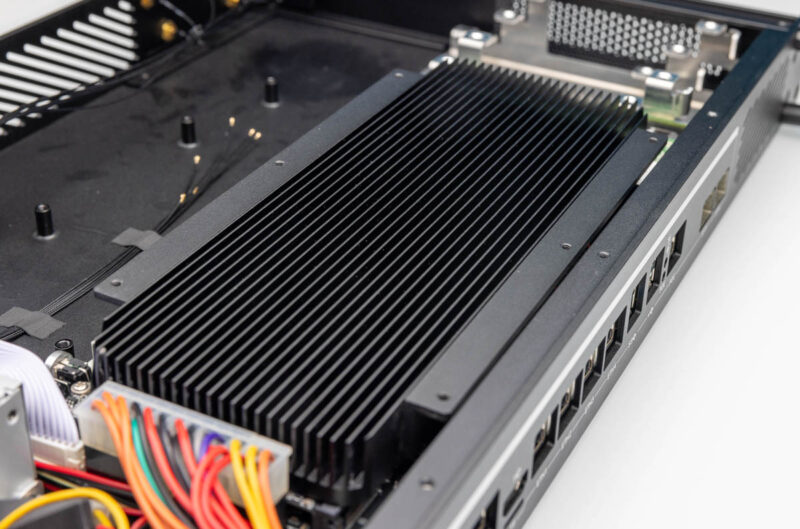
Instead, we detached it from the top before removing the top and we were greeted to this huge heatsink.
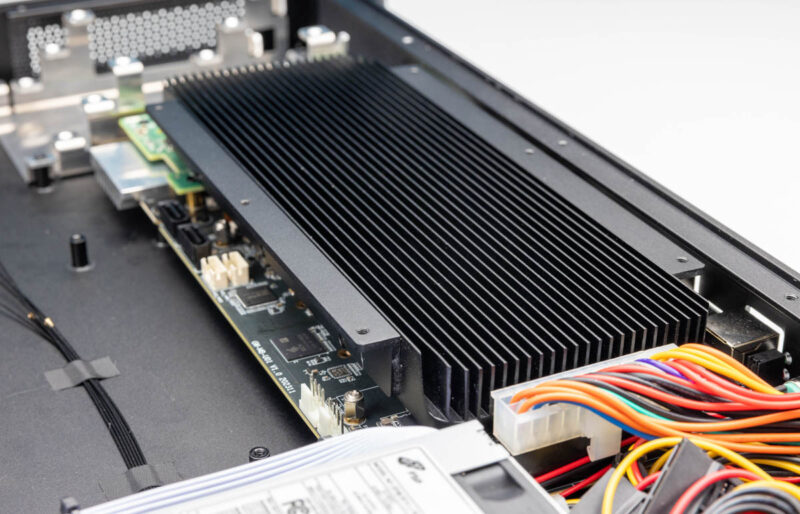
We then pulled that off and we can see the CPU block with the two big heat pipes. The discolored patch to the far right of this photo is where the NIC’s backside has thermal pads to remove some heat this way.
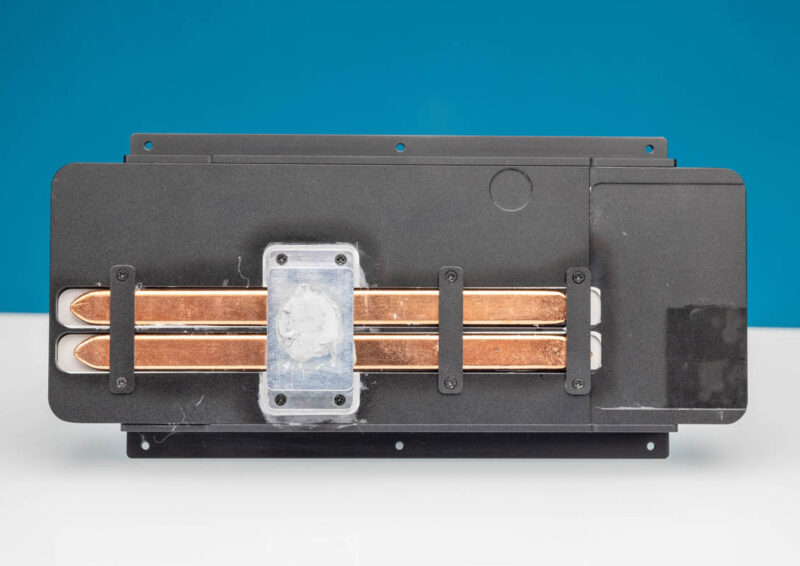
Here is a look at the fanless system’s internals with that big heatsink removed and the thermal pads still on the backside of the NVIDIA Mellanox ConnectX-4 Lx.
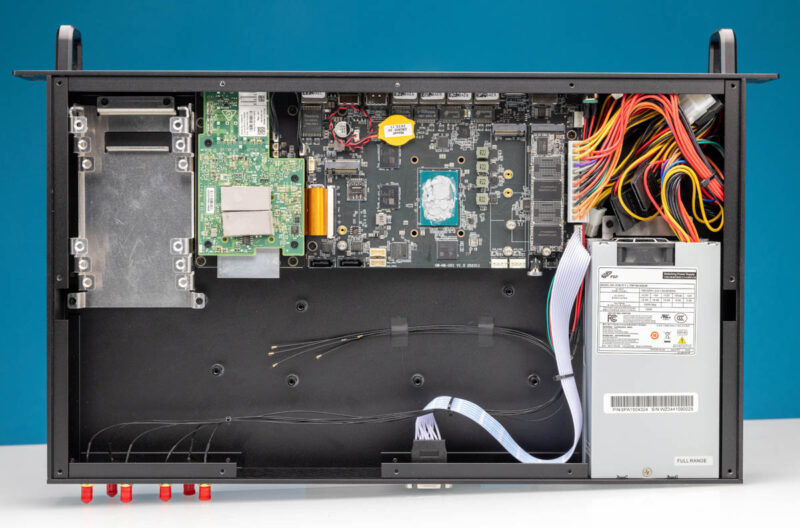
We are going to briefly show the rest of the internals since most of them are the same as in our main review. Here we can see the Intel N305 8 core processor, 16GB of onboard memory, and the 128GB eMMC.
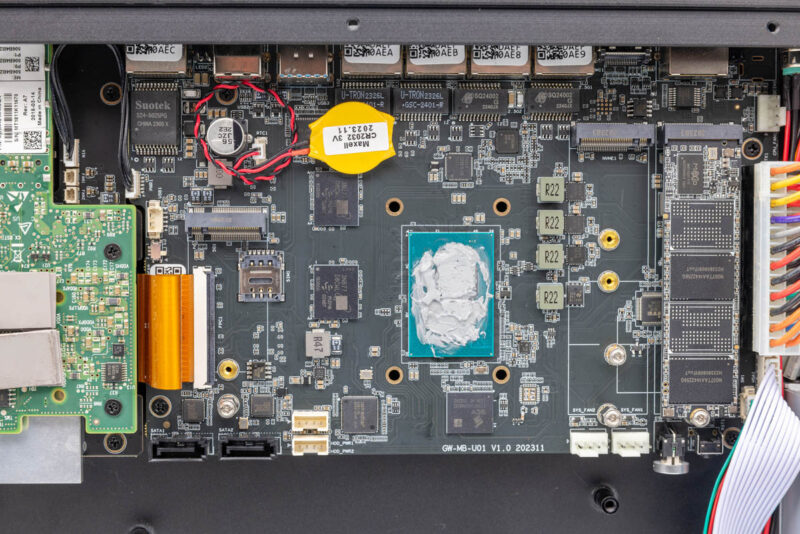
Here we have our two M.2 NVMe slots and a WiFi card slot underneath.
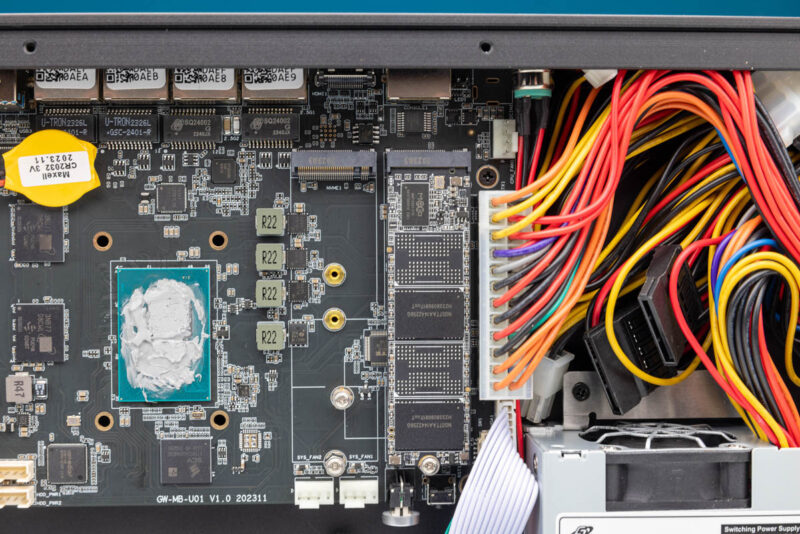
The other side has the Mellanox NVIDIA ConnectX-4 Lx dual 25GbE OCP NIC 2.0 card, but with a twist. There is no fan on this one making it the fourth removed fan (two chassis, one CPU heatsink, and the NIC fan) from our fanless-adjacent unit.
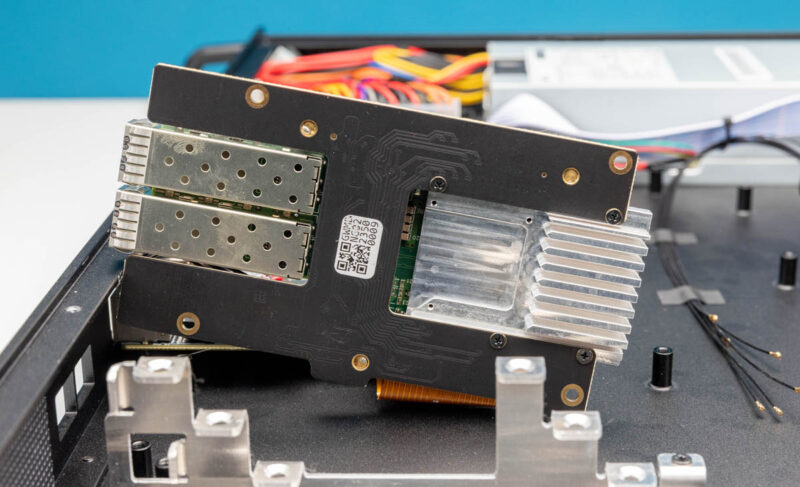
Here is a look at the motherboard out of the chassis with components removed. Here we can also see the WWAN slot, nanoSIM slot, and the two SATA data and power connectors that can be used with two internal drives.
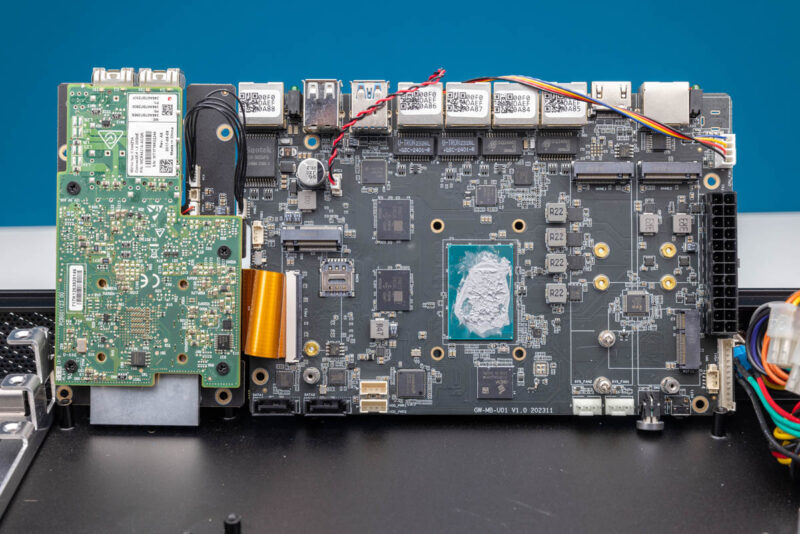
If you want to learn more about how GoWin is packing everything into this platform, check out the main review for all of the PCIe switches and such.
Next, let us get to the performance.




Strange to see such a passive heatsink in a piece of rack equipment.The amount of airflow above equipment is normally not a lot as in general vacant spots are closed with blinding panels to optimize airflow.
Furthermore airflow normally is optimized FtB o BtF. The heatsink is optimized for flow from the side.
That design doesn’t make any sense in a rack.
This thing works outside a Rack very well, but inside one it is essentially a 2U design, as the Heatsink needs that space to work.
If you put a standard 1U switch or server on top, the passive heatsink is 100% blocked. It will perform worse than a huge aluminium brick without any Fins at all in that case because the air cushion around the fins will isolate the heat even more and keep it inside. If they want to cool it passively by airflow from other rackmount hardware, they better use a flexible pipe or Pads to connect it to another chassis or to the Rack itself.
If they want to make the appliance more quiet, i’d prefer a larger radial fan that blows over the Fins of a heatsink and out the back instead of a passive design that still needs a 40mm fan in the back. Radial fans don’t need high RPM to counter the pressure drop that exists in typical 1U enclosures. They can spin very slowly and have much bigger bearings and higher bearing life compared to 40mm high rpm Fans.
– So if they want to make it quiet, they have to get rid of the 40mm PSU Fan first. Then replace the passive heatsink and PSU heatsink all together with a huge 120x120x32mm radial that would be more than sufficient at its lowest speed.
Maybe they could take a leaf out of MikroTik’s book and have the heatsinks mounted on the back. That way when fully squashed top and bottom inside a rack, there’s still some airflow across those rear-mounted heatsinks.
During testing did you find that its steady-state behavior(in terms of clocks/throttling) matched that of short bursts of load; or was there a visible dip once the heatsink finished warming up and cooling capacity started relying exclusively on how fast the heatsink can actually dump heat, rather than how much energy is needed to warm a (fairly chunky looking, by the standards of the overall wattage) chunk of metal?
Going by the pictures that heatsink doesn’t look like it’s messing around in terms of bulk; but (to the best of my distinctly-not-a-thermal-engineer impression) it’s not as obviously well situated to keep shedding heat either on the basis of convection or by exploiting the little bit of airflow from the PSU fan.
If the tests say that clocks and temperatures remain stable I’m clearly just wrong; but it looks like the sort of arrangement where you’d have to ask.
Possible thermal refinements aside; it’s pretty neat to see someone shooting for the closest possible impression of a typically much more expensive class of product. Sure, Intel controls which CPUs get QAT and ECC and which don’t, so it’s not a direct analog; but the sheer punch, and good efficiency, of contemporary CPUs makes it a very interesting alternative to either the $$$ Deverton or Xeon-D implementation of this that Intel would prefer you use; or to some now-affordable but as efficient as you’d expect 6 year old gear to be ebay special.
I would be happy if they put this in a 2U case and used large, low-speed fans. The type of buyer for this unit does not have rack density on his/her priorities.
All those network interfaces mean it is obviously a workstation. Why are you not giving us the Crysis FPS numbers?
Install pfsense or such and measure what the machine is obviously intended for.